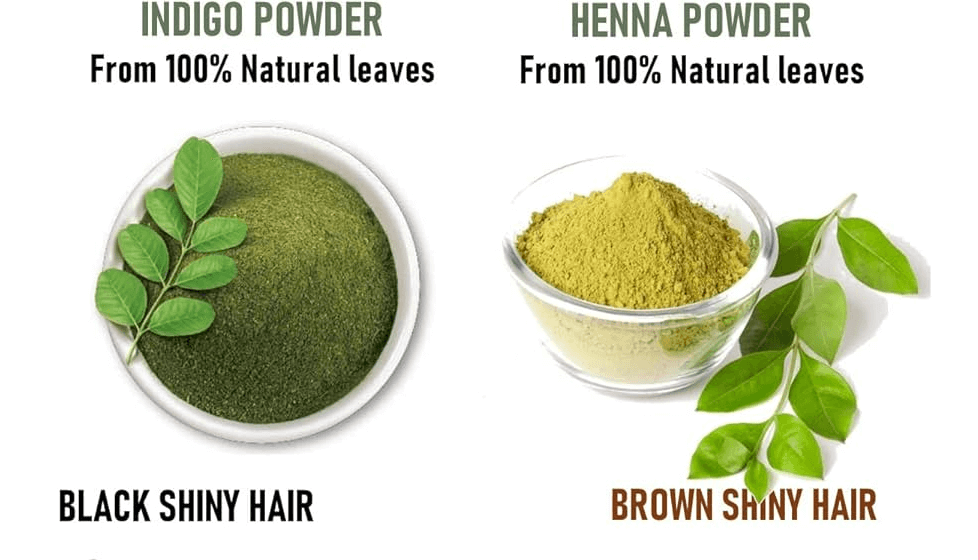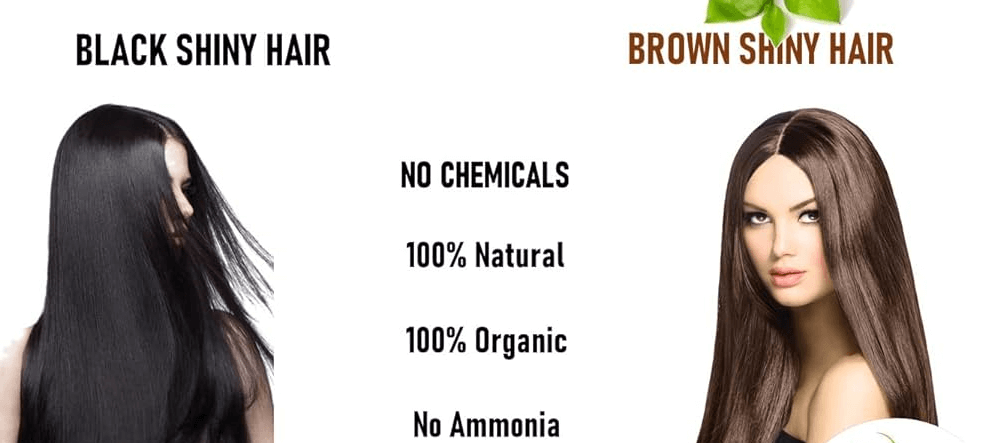
Henna Powder with Indigo: The Perfect Natural Hair Dye Solution
Henna (Lawsonia inermis) is a natural plant-based dye obtained from the leaves of the henna plant. Traditionally used in body art and hair dye, henna imparts a reddish-orange color when applied to hair. Besides its coloring properties, henna is known for its ability to condition, strengthen, and add shine to hair.
Indigo (Indigofera tinctoria), on the other hand, is a plant that produces a blue dye. When used in combination with henna, indigo can create a wide range of hair colors, from rich browns to deep blacks, depending on the proportions and application methods.
2. Benefits of Using Henna Powder with Indigo
Combining henna and indigo offers several advantages over conventional chemical hair dyes:
- Natural and Chemical-Free: Henna and indigo are natural products without harmful chemicals like ammonia, parabens, and sulfates found in many synthetic dyes. This makes them safe for those with sensitive skin or allergies.
- Nourishes and Conditions Hair: Henna and indigo not only color the hair but also strengthen the hair shaft, reduce breakage, and add a natural shine. They are rich in natural compounds that promote hair health.
- Long-Lasting Color: When applied correctly, henna and indigo can provide long-lasting color that doesn’t fade as quickly as synthetic dyes.
- Grey Hair Coverage: The combination of henna and indigo effectively covers grey hair, providing a natural look that blends well with your original hair color.
- Environmentally Friendly: Being plant-based, henna and indigo are biodegradable and have a low environmental impact compared to chemical hair dyes.
3. Choosing the Right Henna and Indigo for Your Hair
To achieve the best results with henna and indigo, selecting high-quality, natural products is crucial. Here’s what to look for:
- Pure Henna Powder: Look for henna that is 100% natural and free from additives. It should be finely sifted for a smooth application and sourced from reputable suppliers. The powder should be a greenish color and have a fresh, earthy scent.
- Pure Indigo Powder: Like henna, indigo should be 100% natural and free of chemicals. It should be a blue-green color, which turns dark blue when mixed with water.
- Testing for Purity: You can test the purity of henna and indigo by mixing a small amount with water. Pure henna will stain the skin orange or red after a few minutes, while pure indigo will turn blue.
4. How to Use Henna Powder with Indigo: Step-by-Step Guide
The method of application can vary based on the desired hair color. Here’s a general step-by-step guide for using henna and indigo together:
For Brown Hair Color (One-Step Method)
- Prepare the Henna Paste: Mix the henna powder with water to create a thick paste. For added conditioning, you can mix in a few drops of essential oil or a teaspoon of coconut oil. Cover the paste with plastic wrap and let it sit for 8-12 hours to release the dye.
- Apply the Henna: Apply the henna paste evenly to clean, dry hair. Starting from the roots, work your way to the ends, ensuring all strands are covered. Wear gloves to avoid staining your hands. Once applied, cover your hair with a plastic shower cap to keep the henna moist.
- Wait for the Henna to Set: Leave the henna on for 3-4 hours. The longer you leave it, the deeper the color will be.
- Rinse Out the Henna: Rinse your hair thoroughly with water, ensuring all the henna paste is washed out. Do not use shampoo.
- Prepare the Indigo Paste: Mix the indigo powder with warm water to form a paste. Unlike henna, indigo doesn’t need to sit for long. You can use it immediately after mixing.
- Apply the Indigo: Apply the indigo paste to your hair, just like you did with the henna. Cover your hair again with a plastic cap.
- Wait for the Indigo to Set: Leave the indigo on for 1-2 hours, depending on the desired shade. A longer duration will result in a darker color.
- Rinse Out the Indigo: Rinse your hair with water until all the indigo paste is removed. Avoid using shampoo for the next 24-48 hours to allow the color to fully develop.

For Black Hair Color (Two-Step Method)
- Follow Steps 1-4 from the Brown Hair Method: Apply henna first to get a red base.
- Prepare the Indigo Paste: After rinsing out the henna, mix and apply the indigo paste to your hair. This two-step process helps achieve a darker color, perfect for those looking for a deep black shade.
- Leave the Indigo on for 1-2 Hours: The longer you leave it, the darker the color will be.
- Rinse Out the Indigo: As before, rinse with water until clear, avoiding shampoo for the first 24-48 hours.
5. Tips for Achieving the Best Results
- Perform a Strand Test: Before applying henna and indigo to your entire head, do a strand test to see how your hair reacts and to adjust the timing if needed.
- Avoid Shampooing Right Away: After dyeing your hair, avoid using shampoo for at least 24-48 hours to let the color set.
- Keep Hair Moisturized: Henna and indigo can be drying for some hair types. Use a good conditioner or natural oils to keep your hair moisturized.
- Reapply as Needed: The color from henna and indigo may fade over time, especially with frequent washing. You can reapply every 4-6 weeks or as needed.
6. Frequently Asked Questions (FAQs)
Q1: Can I use henna and indigo on chemically treated hair?
Yes, you can use henna and indigo on chemically treated hair. However, it’s advisable to wait for at least 4-6 weeks after any chemical treatment to avoid unexpected color results.
Q2: How long does the color last?
The color from henna and indigo can last anywhere from 4-8 weeks, depending on your hair type, how often you wash your hair, and the products you use.
Q3: Can I mix henna and indigo together?
Yes, you can mix henna and indigo together for a brown shade. However, for a darker black color, it’s best to apply henna first, followed by indigo.
Q4: Does henna and indigo dye grey hair effectively?
Yes, henna and indigo can effectively cover grey hair. The two-step method (henna followed by indigo) is recommended for grey hair coverage.
Q5: Is it safe to use henna and indigo during pregnancy?
Since henna and indigo are natural, they are generally considered safe during pregnancy. However, it’s always best to consult with a healthcare professional before using any hair dye products during pregnancy.
7. Conclusion
Using henna powder with indigo is a fantastic way to color your hair naturally while nourishing and strengthening it. This chemical-free method not only provides beautiful, lasting color but also promotes hair health. Whether you’re looking for a rich brown, a deep black, or just want to cover some greys, henna and indigo offer a versatile and safe solution. Embrace the beauty of natural hair dyeing and enjoy the benefits of healthy, vibrant hair!
By following these steps and tips, you can achieve the perfect shade of color and enjoy the numerous benefits of using henna and indigo for your hair. Experience the richness and vibrancy of natural hair coloring and see the difference it can make!





